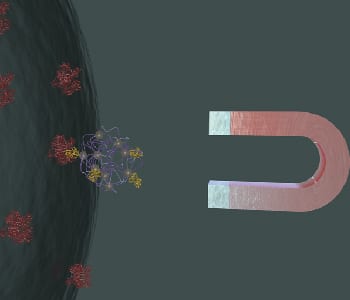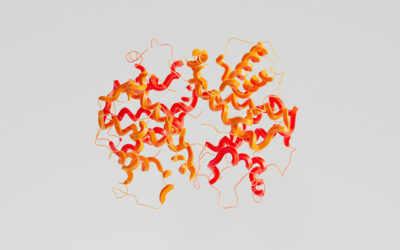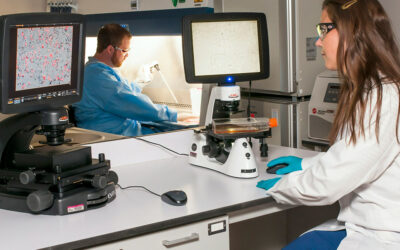When cancer is suspected in a patient, samples are taken from the suspected tissue for analysis in a procedure called biopsy. An invasive biopsy, performed by a surgeon, is however stressful for the patient, cannot reach every tissue and does not give insight into tumor progression.
During tumor progression, cells can detach from the primary tumor. Via the bloodstream, these cells can colonize distant tissue and form metastases, thereby leading to the majority of cancer related deaths. On the other hand, these so called circulating tumor cells (CTCs), can play a crucial role in detecting tumors early and monitoring their progression. In a so called liquid biopsy, blood is collected from a patient and the CTCs are analyzed. Since the concentration of CTCs in the blood is very low compared to other cell types, their isolation is very challenging.
Calderón and co-workers have developed nanogels as magnetic capturing devices for CTCs. Magnetic nanogels (MNGs) were synthesized by the cross-linking of azide functionalized polyglycerols with magnetic iron oxide nanoparticles decorated with bicyclononyne in an azide-alkyne cycloaddition. Since receptors of the glycoprotein transferrin are overexpressed on tumor cells, transferrin was then immobilized on the surface of the MNGs using different PEG spacers.
These nanogels were then applied in the magnetic separation of human colon cancer cells from a mixed cell suspension. The capturing efficiency of cancer cells depended on the PEG spacer length with a maximum of 33% at 8 PEG units.
Since the synthesis of the MNGs was based on a building block concept, it will allow easy modification and substitution of targeting ligands as well as of polymer network chains. Therefore facile tuning of the size, flexibility, swelling capacity, and surface chemistry can be envisioned.

















